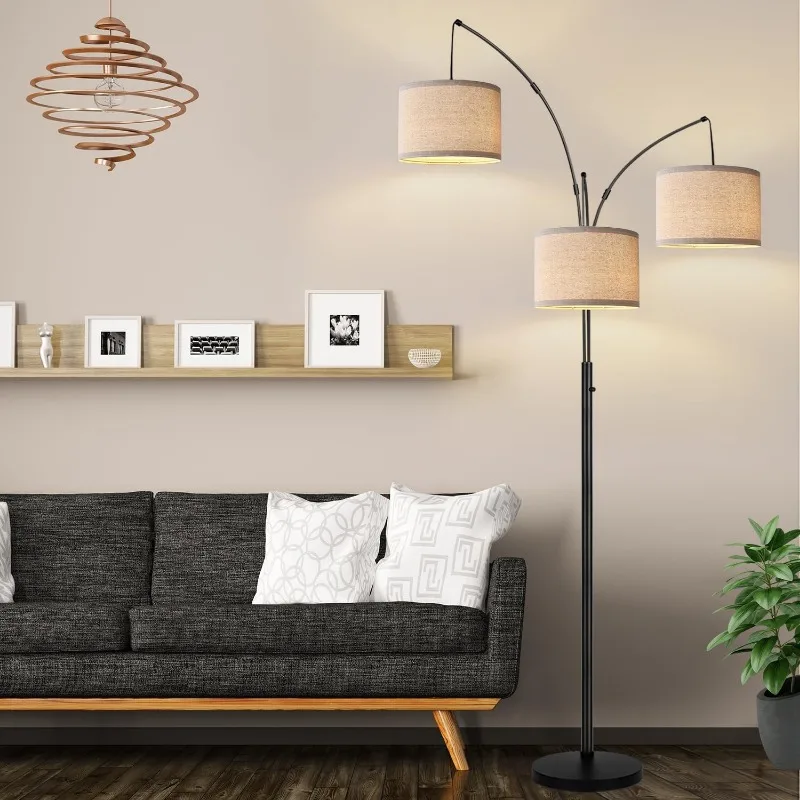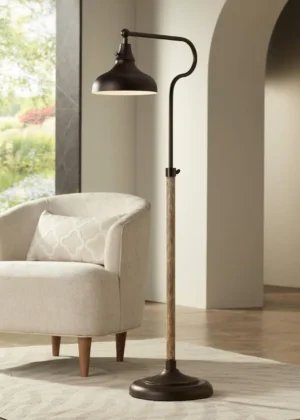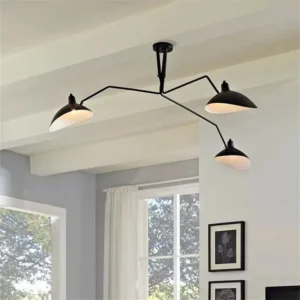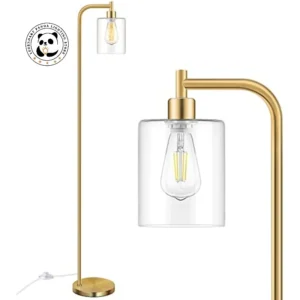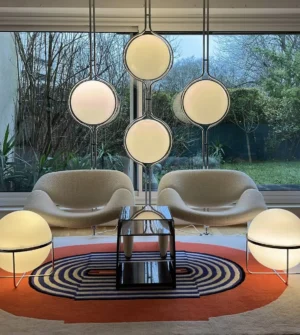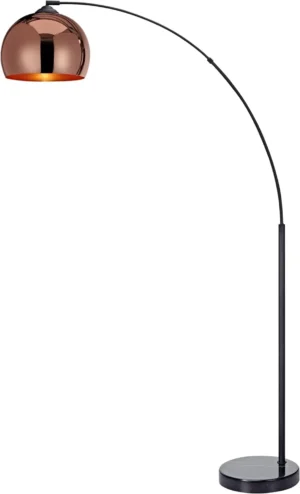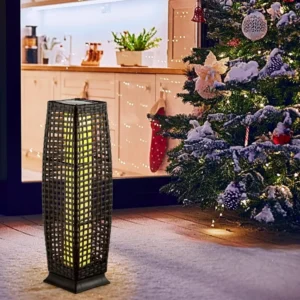When you walk into a room with high ceilings, the sense of spaciousness can be breathtaking. However, these grand spaces often come with significant lighting challenges. Without the right illumination strategy, high-ceiling rooms can feel cavernous, cold, and improperly lit. This comprehensive guide will walk you through the best lighting solutions for high ceilings, ensuring your lofty space feels both impressive and inviting.
Challenges of Lighting High Ceilings
High ceilings, typically defined as those 10 feet (3 meters) or taller, create unique lighting challenges that standard approaches often fail to address. Understanding these challenges is the first step toward developing an effective lighting plan.
The most common lighting difficulties in high-ceiling spaces include:
- Insufficient illumination creating dark zones, especially at the human level where light is most needed
- Improper scale issues where standard fixtures appear tiny and insignificant against vast vertical space
- Maintenance headaches when it comes time to replace bulbs or clean fixtures mounted at height
- Energy efficiency concerns as larger volumes require more light, potentially increasing power consumption
- Heat rise effect where warm air (and light) collects near the ceiling, leaving lower areas feeling darker
Consider a living room with 14-foot (4.3-meter) ceilings. A standard ceiling light designed for 8-foot (2.4-meter) ceilings would look disproportionately small and project light that dissipates before adequately illuminating the living space. According to lighting standards, rooms with high ceilings typically need 20-40% more lumens than standard-height spaces to achieve the same perceived brightness.
Understanding how to effectively illuminating grand spaces with arc lamps provides valuable insights into overcoming these challenges with strategic fixture selection and placement.
Fundamental Lighting Principles for High-Ceiling Spaces
Before exploring specific fixture types, it’s essential to understand the foundational principles that make high-ceiling lighting successful.
Layer your lighting approach: Never rely on a single lighting type for high ceilings. Instead, implement a three-layer strategy:
– Ambient lighting to fill the overall volume with general illumination
– Task lighting to provide focused illumination for specific activities
– Accent lighting to highlight architectural features, artwork, or create visual interestApply the Rule of Thirds: When planning vertical lighting, mentally divide your ceiling height into thirds. Placing light sources at different heights creates visual interest and ensures illumination throughout the entire volume.
Consider light distribution patterns: Light spreads differently based on fixture type and height. As distance increases, light coverage expands but intensity diminishes following the inverse square law (intensity decreases with the square of the distance).
Match fixture scale to room dimensions: In high-ceiling spaces, fixtures need to be larger than you might initially think. Undersized fixtures get visually lost in the volume.
Create depth through light layering: Illuminating walls and architectural features prevents the “spotlight effect” where only the floor is bright while walls remain dark.
Specialized arc lighting solutions for high spaces can be particularly effective when implementing these principles, as they provide adjustable, directional light that can be strategically positioned to overcome height challenges.
Chandeliers: Making a Statement in Lofty Spaces
Chandeliers are perhaps the most traditional solution for high ceilings, and for good reason. These statement pieces fill vertical space beautifully while providing necessary illumination.
Best applications: Grand entryways, formal dining areas, great rooms, and two-story living spaces
Sizing guide: To determine the ideal diameter for a chandelier, add the room’s length and width (in feet), then convert to inches. For example, a 15’ × 18’ room would need a chandelier approximately 33 inches in diameter. For exceptionally high ceilings (14+ feet/4.3+ meters), add 2-3 inches to this calculation.
Positioning height: The bottom of a chandelier should hang at least 7 feet (2.1 meters) from the floor in traffic areas. Over tables, position chandeliers 30-36 inches (76-91 cm) above the surface.
Pros:
– Creates a dramatic focal point that draws the eye upward
– Provides excellent ambient lighting when properly sized
– Brings the eye down in very tall spaces, making them feel more intimate
– Adds architectural interest and style definition
Cons:
– Quality fixtures often represent a significant investment
– Installation typically requires professional electricians
– Cleaning and maintenance can be challenging
– May need supplemental lighting for complete room coverage
For particularly high ceilings, consider tiered chandeliers with multiple levels of lights or extra-large statement pieces. Ceiling heights of 12+ feet (3.7+ meters) can accommodate impressively scaled fixtures that would overwhelm standard rooms.
For a different multi-light approach, multi-light arc floor lamps provide similar visual interest without requiring ceiling installation, making them excellent complementary lighting sources.
Pendant Lights: Versatile Solutions for Various Heights
Pendant lights offer tremendous versatility for high-ceiling spaces, working well alone or in clusters to create visual impact while bringing light down to a more functional level.
Types particularly effective for high ceilings:
– Oversized single pendants (24+ inches/61+ cm in diameter)
– Linear pendants spanning tables or islands
– Cluster arrangements with multiple pendants at varying heights
– Multi-tier pendants that fill vertical space
Drop length recommendations:
– 10-12 foot (3-3.7 meter) ceilings: 24-30 inch (61-76 cm) drops
– 13-14 foot (4-4.3 meter) ceilings: 30-36 inch (76-91 cm) drops
– 15+ foot (4.6+ meter) ceilings: 36+ inch (91+ cm) drops
Pros:
– Brings light down to human level where it’s most useful
– Creates visual interest that bridges the gap between ceiling and floor
– Available in countless design styles at various price points
– Can be adjusted to precise heights during installation
Cons:
– May create islands of light without comprehensive planning
– Can appear unbalanced if not properly scaled to the space
– Limited light spread requires thoughtful placement for even illumination
When selecting pendants for high ceilings, consider both the size of the fixture and the light output. Larger pendants with higher lumen output are typically necessary to make a visual impact and provide adequate illumination from greater heights.
Understanding ceiling height considerations for arc lamps can help inform your pendant selection and placement strategy for optimal results.
Recessed Lighting: Even Illumination for Tall Spaces
Recessed lighting provides clean, architectural illumination for high ceilings without visually interrupting the space. However, standard recessed fixtures often prove insufficient for greater heights.
Technical considerations for high ceilings:
– Select deeper housings specifically rated for high ceiling installation
– Choose special trims designed to maximize light projection
– Opt for higher lumen output bulbs or fixtures
Beam angle recommendations:
– 10-12 foot (3-3.7 meter) ceilings: 60-75 degree beam spread
– 13+ foot (4+ meter) ceilings: 75-120 degree beam spread
Spacing guidance: To determine proper spacing between recessed lights, multiply your ceiling height by 0.5-0.7. For example, 14-foot (4.3-meter) ceilings would need recessed lights spaced approximately 7-10 feet (2.1-3 meters) apart for even coverage.
Pros:
– Creates clean, unobtrusive aesthetic
– Provides even, consistent illumination throughout the space
– Eliminates maintenance accessibility issues
– Works well for wall washing or highlighting specific features
Cons:
– Requires careful planning to avoid excessive ceiling penetrations
– Typically requires professional installation
– Makes less decorative impact than hanging fixtures
– Often needs more fixtures to adequately light tall spaces
Recessed lighting works best as a foundation layer in high-ceiling spaces, combined with other fixture types for complete illumination. For areas where ceiling installation is impractical, LED arc floor lamps can provide supplemental directional lighting with similar effects.
Track and Rail Lighting: Directional Flexibility for High Ceilings
Track and rail lighting systems offer exceptional flexibility for high-ceiling spaces, allowing you to direct light precisely where needed while adapting to changing room arrangements.
Modern track options for high ceilings:
– Ceiling-mounted tracks for clean architectural looks
– Suspended systems that bring light closer to activity areas
– Curved or geometric configurations to complement room architecture
– High-output LED systems with adjustable heads
Pros:
– Provides maximum adjustability for changing needs
– Excels at highlighting artwork and architectural features
– Can be reconfigured or repositioned as room uses evolve
– Contemporary systems offer sleek, sophisticated aesthetics
Cons:
– Can appear institutional without careful selection
– Limited in ambient lighting capacity without diffused fixtures
– Requires strategic placement to minimize glare
– Quality systems represent a significant investment
Track lighting is particularly effective for high-ceiling applications like art galleries, retail spaces, and modern homes with architectural features worth highlighting. When selecting track systems for high ceilings, look for fixtures with adequate lumen output and beam angle control to effectively illuminate from greater heights.
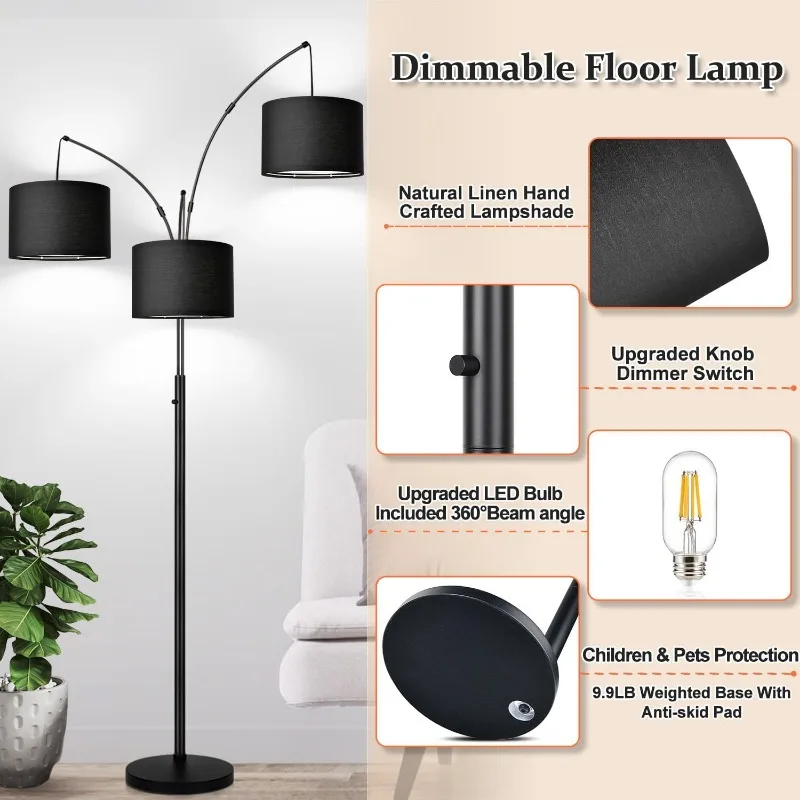
Wall Sconces and Uplighting: Creating Dimension in Tall Rooms
Wall-mounted lighting plays a crucial role in high-ceiling spaces by illuminating vertical surfaces, reducing the perception of cavernous volume, and adding warmth at the human level.
Strategic applications:
– Position sconces at eye level (approximately 5.5-6 feet/1.7-1.8 meters from floor) to create human-scale illumination
– Use uplights to highlight architectural columns, beams, or textured walls
– Install wall washers to brighten large vertical surfaces and reflect light into the room
– Consider adjustable-head sconces that can direct light where needed
Pros:
– Adds essential light layers without consuming floor space
– Creates visual warmth by illuminating wall surfaces
– Highlights architectural elements that might otherwise be lost in shadow
– Helps eliminate the “dark cave” effect in rooms with high ceilings
Cons:
– Provides limited primary illumination on its own
– Requires accessible wall surfaces for mounting
– Often needs complementary overhead lighting for balance
– Typically requires hardwired installation by professionals
The impact of well-placed wall lighting in high-ceiling spaces can be dramatic. A room that previously felt imposing and cold can become intimate and inviting when walls are properly illuminated. For comprehensive guidance on creating the right atmosphere, explore additional techniques for creating ambiance in large spaces.
Floor and Table Lamps: Grounding High-Ceiling Spaces
Portable lighting solutions play a vital role in bringing illumination down to the human level in high-ceiling rooms. Floor and table lamps create intimacy and functionality in spaces that might otherwise feel overwhelming.
Floor lamp considerations:
– Look for taller floor lamps (65+ inches/165+ cm) to better relate to high ceilings
– Consider arc-style lamps that extend light over seating areas
– Select lamps with higher lumen output to compensate for volume
– Choose designs with visual weight appropriate for the scale of the room
Table lamp strategies:
– Group larger table lamps for greater visual impact
– Position at multiple heights through the room for layered light
– Select designs with substantial bases and larger shades
– Consider the shade’s direction of light (up, down, or diffused)
Pros:
– Creates intimate zones of light at human scale
– Offers flexibility to reposition as needs change
– Requires no installation or electrical work
– Adds decorative elements that complement your style
Cons:
– Occupies valuable floor or table space
– Requires consideration of cord placement and safety
– Needs thoughtful selection to avoid appearing undersized
– Provides limited overall illumination capacity
For high-ceiling spaces, large oversized arc floor lamps offer particularly effective solutions. Their dramatic reach and scale relate well to generous ceiling heights while bringing light exactly where needed for reading, conversation, or other activities.
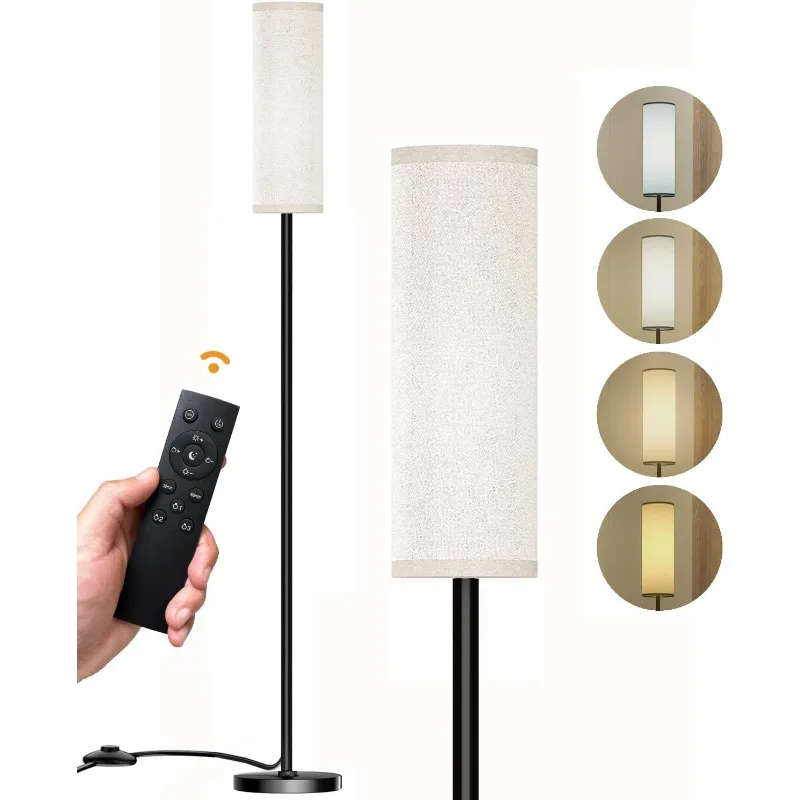
Integrated Natural Light: Maximizing Daylight in Tall Spaces
Natural light represents a valuable resource in high-ceiling spaces. Strategic integration of daylight not only reduces energy costs but also creates dynamic, psychologically beneficial illumination.
Daylight-maximizing strategies:
– Clerestory windows that admit light near the ceiling
– Properly positioned skylights with diffusing materials
– Light shelves that redirect sunlight deeper into the space
– Reflective upper wall surfaces that bounce daylight throughout the room
Pros:
– Significantly reduces daytime energy consumption
– Creates naturally changing light throughout the day
– Provides proven psychological and health benefits
– Can beautifully highlight architectural features
Cons:
– Varies with weather conditions and time of day
– May require window treatments for glare control
– Creates potential for unwanted heat gain
– Requires supplemental lighting for evenings
For a complete illumination strategy, natural light should be complemented with artificial lighting systems that maintain adequate light levels as daylight changes. For spaces where natural light is abundant during the day, tall arc floor lamps for vaulted ceilings provide elegant transitional lighting for evening hours.
Technical Considerations for High-Ceiling Lighting
Beyond fixture selection, technical lighting calculations ensure your high-ceiling space achieves proper illumination levels for both functionality and atmosphere.
Lumen requirements:
To calculate approximate lumen needs, multiply the room’s square footage by:
– 20 lumens per square foot for ambient lighting in high-ceiling living spaces
– 30-40 lumens per square foot for task-intensive areas
– Add 10-15% additional lumens for each foot of ceiling height above 8 feet
Color temperature guidance:
– Standard ceiling heights (8-10 feet/2.4-3 meters): 2700K-3000K creates warm, inviting atmosphere
– Higher ceilings (11-15 feet/3.4-4.6 meters): 3000K-3500K helps light maintain perceived brightness
– Very high ceilings (16+ feet/4.9+ meters): 3500K-4000K counteracts light loss over distance
Energy efficiency strategies:
– Utilize high-efficiency LED fixtures with appropriate lumen output
– Implement zoned lighting to illuminate only areas in use
– Install occupancy/vacancy sensors in transitional spaces
– Consider daylight harvesting systems that adjust artificial light based on natural light availability
Incorporating dimmable systems is particularly important for high-ceiling spaces, allowing adjustment for different times of day and activities. Dimmable arc floor lamps provide this flexibility in portable lighting, complementing hardwired systems.
Room-Specific Lighting Strategies for High Ceilings
Different rooms with high ceilings serve distinct functions and require tailored lighting approaches to maximize both beauty and functionality.
Living Rooms:
– Create distinct lighting zones for conversation, reading, and media viewing
– Layer ambient ceiling fixtures with wall sconces at human height
– Add floor lamps beside seating areas for task lighting
– Consider picture lights or wall washers to highlight art and architecture
Entryways & Foyers:
– Make a dramatic first impression with statement chandeliers or pendant clusters
– Position the bottom of hanging fixtures at least 7 feet (2.1 meters) above the floor
– Add wall sconces to illuminate vertical surfaces and provide secondary light
– Consider light that highlights architectural features like stairs or columns
Dining Areas:
– Center fixtures over the table, sized appropriately to the table dimensions
– Position the bottom of fixtures 30-36 inches (76-91 cm) above the table surface
– Add complementary wall lighting or buffet lamps for additional illumination
– Install dimmers for adjustable ambiance during different dining occasions
Kitchens:
– Combine recessed lighting for overall illumination with pendant fixtures over islands
– Ensure adequate task lighting for work surfaces through under-cabinet lighting
– Select pendant heights that don’t block sightlines across the space
– Consider decorative yet functional fixtures that relate to the ceiling height
Bedrooms:
– Focus on creating a sense of intimacy despite high ceilings
– Layer lighting with ambient fixtures, wall sconces, and bedside lamps
– Consider cove lighting or indirect fixtures to soften the overall effect
– Implement comprehensive dimming for evening relaxation
For more comprehensive room-specific guidance, explore strategies for specialized lighting strategies for living spaces that address the unique challenges of high ceilings.
Installation and Maintenance Solutions for High-Ceiling Fixtures
The practicality of maintaining lighting in high-ceiling spaces deserves careful consideration during the planning phase to avoid future headaches.
Professional installation considerations:
– Always hire professionals for complex chandelier installations
– Ensure proper support for heavy fixtures with appropriate ceiling brackets
– Verify electrical capacity for larger or multiple fixtures
– Consider future maintenance access during initial installation
Maintenance solutions:
– Motorized lift systems that lower chandeliers for cleaning and bulb replacement
– Extendable tools designed specifically for high fixtures
– Remote-controlled fixtures with adjustable features
– Chandelier pulley systems for manual lowering
Bulb selection strategies:
– Select long-life LED bulbs rated for 25,000+ hours to minimize replacement frequency
– Consider integrated LED fixtures for the longest maintenance-free periods
– Choose bulbs with warranties when available
– Keep replacement bulbs on hand for consistent color temperature when replacements are needed
Cleaning approaches:
– Schedule annual professional cleaning for elaborate high fixtures
– Use extension dusters with microfiber attachments for routine maintenance
– Consider fixtures with smooth surfaces that collect less dust
– Apply anti-static sprays to reduce dust accumulation
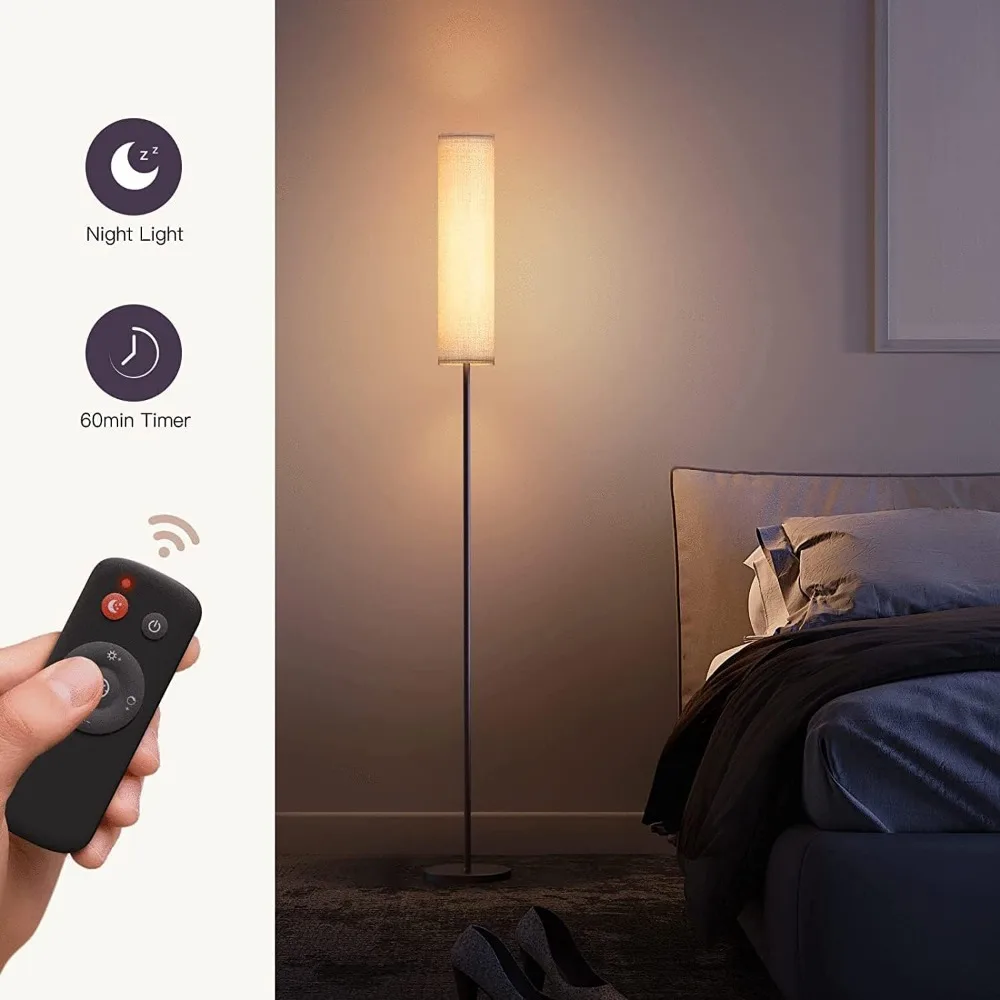
Adjustable Arc Floor Lamp, Bronze Arc Floor Lamp
Price range: $440.95 through $558.52 Select options This product has multiple variants. The options may be chosen on the product page- Price range: $174.28 through $658.31 Select options This product has multiple variants. The options may be chosen on the product page
Brass Arc Floor Lamp, Contemporary Arc Floor Lamp, LED Arc Floor Lamp
Price range: $490.72 through $522.04 Select options This product has multiple variants. The options may be chosen on the product pageChrome Arc Floor Lamp, LED Arc Floor Lamp
Price range: $304.95 through $1,210.40 Select options This product has multiple variants. The options may be chosen on the product pageContemporary Arc Floor Lamp, Large Arc Floor Lamp, Marble Base Arc Floor Lamp
$224.94 Select options This product has multiple variants. The options may be chosen on the product pageLED Arc Floor Lamp, Rattan Arc Floor Lamp
$313.58 Select options This product has multiple variants. The options may be chosen on the product page
Factors to Consider When Selecting High-Ceiling Lighting Fixtures
To make informed lighting decisions for your high-ceiling space, evaluate these key factors before purchasing:
Room Dimensions & Proportions:
– Ceiling height (exact measurement)
– Room width and length
– Room shape (square, rectangular, irregular)
– Floor-to-ceiling window placement
Ceiling Configuration:
– Flat, vaulted, cathedral, coffered or beamed
– Structural limitations for fixture installation
– Existing electrical outlet positions
Architectural Features:
– Exposed beams or trusses
– Columns or pillars
– Wall niches or built-ins
– Staircases or balconies overlooking the space
Room Function:
– Primary activities (entertaining, dining, working)
– Furniture arrangement and traffic patterns
– Need for task lighting in specific areas
– Desired mood and atmosphere
Style Considerations:
– Existing décor style (modern, traditional, transitional)
– Color scheme and materials
– Visual weight of other elements in the room
– Desired focal points
For spaces with varying ceiling heights or multiple functions, adjustable arc floor lamps provide versatile solutions that can adapt to different areas within the same room.
Creating a Cohesive Lighting Plan for High-Ceiling Spaces
A successful lighting plan for high ceilings requires a strategic approach that combines multiple fixture types and placement considerations.
Step-by-step planning process:
Conduct a lighting audit:
– Assess current light levels throughout the space
– Identify problem areas with insufficient illumination
– Note architectural features worth highlighting
– Determine where task lighting is neededEstablish lighting layers:
– Plan primary ambient lighting for overall illumination
– Add task lighting for specific activity areas
– Include accent lighting for visual interest and highlighting features
– Incorporate decorative lighting that contributes to the styleCreate lighting zones:
– Divide the space into functional areas with distinct lighting needs
– Plan separate controls for different zones
– Consider how zones interact visually and functionallyEnsure proper distribution:
– Avoid leaving dark corners or shadows
– Plan for even light distribution at human level
– Consider light reflection from walls and ceilings
– Balance downlighting with uplighting for dimensional illumination
For spaces requiring multiple light sources that work together cohesively, 3-light arc floor lamps offer elegant solutions that provide balanced illumination while making a design statement appropriate for high-ceiling rooms.
Common Mistakes to Avoid When Lighting High Ceilings
Even well-intentioned lighting plans can fall short without careful attention to these common pitfalls:
Undersized fixtures that appear diminutive against the ceiling height, creating visual disconnect
Relying on a single lighting approach rather than layering different fixture types for comprehensive illumination
Improper hanging heights that create glare or position light too far from where it’s needed
Insufficient light output for the volume of the space, resulting in a dim or gloomy atmosphere
Neglecting dimming and control options that would allow flexibility for different activities and times of day
Poor fixture spacing creating uneven pools of light and dark zones
Overlooking maintenance requirements leading to difficult or dangerous bulb replacement scenarios
Ignoring energy efficiency which can result in unnecessarily high operating costs for large spaces
For guidance on selecting properly proportioned lighting for tall spaces, explore recommendations for best arc lamps for tall ceilings that avoid these common mistakes.
When to Consult a Professional Lighting Designer
While many lighting decisions can be made independently, certain situations warrant professional expertise:
Consider professional consultation when:
– Ceiling heights exceed 16 feet (4.9 meters)
– The space has complicated architectural features
– The room serves multiple functions requiring complex lighting
– You’re planning a comprehensive renovation
– Specialized lighting effects are desired
– Custom fixtures or complex control systems are needed
A qualified lighting designer brings technical knowledge of light distribution, electrical requirements, and fixture specifications that go beyond aesthetic considerations. When interviewing potential designers, ask about their experience specifically with high-ceiling spaces and request examples of similar projects they’ve completed.
The investment in professional design typically represents a small percentage of the overall lighting budget but can significantly improve both the functionality and visual impact of your high-ceiling space.
By applying these principles, selecting appropriate fixtures, and avoiding common mistakes, you can transform your high-ceiling space from a lighting challenge into a dramatic showcase of thoughtful illumination that enhances both the architecture and your everyday experience of the space.

